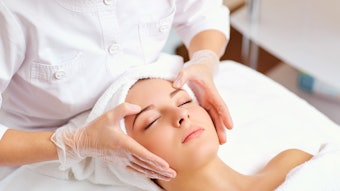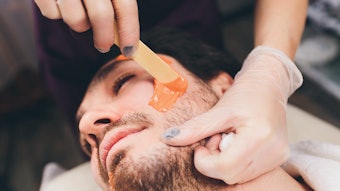
Melasma is a common skin condition that often is difficult to treat. Although the cause is not completely understood, it is known that the over-production of melanin creates its characteristic brown or grey-brown patches on skin. The human body’s production of pigment is a complicated process, which is why reducing any pigment usually requires a multi-pronged approach. Melanocytes are cells that live in our dermis and produce melanin. Melanin is bundled up in melanosomes, which move up to the surface of the skin and disperse, which then appears as coloring or complexion. The biochemical process of making melanin is complex and involves many proteins, enzymes and hormones. An individual’s amount of melanin depends upon many factors, including genetics, sun exposure, prescription drugs, illnesses and hormones.
Melanin has many positive functions, including the absorption of UV light, which diminishes the risk of skin cancer and provides protection against photoaging. While the over-production of melanin (as seen in melasma) does not pose a medical risk, its emotional damage can be high, including lowered self-esteem, decreased social functioning and decreased work productivity. Therefore, it is a condition that all skin care professionals should be able to address.
Who Gets Melasma
Although often associated with pregnant women, melasma is not limited to this demographic, and it does not occur just on the face. These patches classically present on the forehead, lateral aspects of the cheeks, above the upper lip and on the chin. However, they can appear on other areas of the face and body. Women of childbearing age comprise an estimated 90% of melasma clients, and it has been reported that approximately 6 million women in the United States have this condition. However, any of the following traits can lead to the development of melasma.
Pregnancy. Melasma often first presents during periods of hormonal change, such as during pregnancy. Due to its frequent onset during pregnancy, it has been referred to as the “mask of pregnancy.”
Birth control. The use of birth control pills also causes a significant hormonal change and can cause melasma.
Darker Fitzpatricks. People with darker skin, such as those with Asian, Mediterranean, Middle Eastern, African or Latin/Hispanic heritage, are more likely to experience melasma. This is probably due to having more active melanocytes than those with lighter skin.
Genetic predisposal. People with a close relative who has melasma are at a higher risk of developing it.
Identifying Melasma
First, it is important to differentiate melasma from more typical hyperpigmentation due to sun exposure. When your client complains of dark spots, take time to study their distribution on the face and ask the appropriate questions, such as the client’s ethnic background and when the spots started.
In addition, ask what makes the dark spots worse. Melasma clients usually will report that even small amounts of sun exposure, heat and harsh products exacerbate the condition. If you determine that the dark spots are melasma, a frank discussion on expectations is important.
Do Not Overpromise
Melasma should be considered controllable, but not treatable. There is no “magic wand” that a skin care professional or anybody else can wave that will make it go away and stay away. Melasma is different than traditional sun spots, which can be treated successfully and kept away with good sun protection. Rarely will an individual’s melasma dissipate on its own. Since this type of hyperpigmentation’s underlying causes include genetics and hormones, permanent reduction is usually not possible.
Lifestyle Changes
Skin treatments will have little impact on this condition unless the exacerbating factors are first addressed. These include the following.
 Birth control. If your melasma client is currently on birth control pills, she may want to consider an alternative form of birth control. The hormonal changes induced by oral contraceptives are often a culprit, and reducing those can make a significant difference. If she’s pregnant, reassure her that the hyperpigmentation may improve dramatically in the months following her delivery.
Birth control. If your melasma client is currently on birth control pills, she may want to consider an alternative form of birth control. The hormonal changes induced by oral contraceptives are often a culprit, and reducing those can make a significant difference. If she’s pregnant, reassure her that the hyperpigmentation may improve dramatically in the months following her delivery.Sun exposure. It is important for clients to understand that any sun exposure can increase their hyperpigmentation. A chemical and physical sunscreen combination is best for them, since this gives maximum protection. They should never use a sunscreen that only offers chemical protection, since such products still allow heat and UV absorption. In addition, clients need to wear hats, long sleeves and sunglasses. Remind your clients that UV rays can penetrate car and building windows, and are still present during winter months.
Heat. Heat usually makes melasma worse because heat increases the activity of melanocytes. In some patients, this may mean refraining from working over a hot stove or having a fan directed on their face while the cook.
Exercise. Athletes who work out (even indoors, without sun exposure) may find their melasma is difficult to control because they are constantly heating themselves with exercise. Help these clients identify ways to reduce heat exposure, such as by using a cooling bandana while exercising.
Stress. Stress may also exacerbate melasma. When humans are stressed, several hormones (such as adrenocorticotropic hormone) are increased. This release also can contribute to pigment production. Melasma clients must understand this so they can develop methods to control stress in their lives.
Treating Melasma
Clients also must understand that, after melasma has been treated and reduced, strict protocols must be followed and even then, treatments will likely need to continue in the future.
Lasers. The first rule in treating these patients is to not use heat. As stated, heat can make melasma worse, so traditional laser procedures are contra-indicated. Currently, trials are being conducted by the U.S. Food and Drug Administration using laser energy that enters the melanocytes so quickly that heat is not produced. These are showing promise for improving melasma. However, traditional lasers will likely make your patient’s face even darker. This is especially true in darker-skinned patients, who are already at risk for hyperpigmentation from laser treatments.
Chemical peels. As noted, chemical peels may be effective treatments for these clients. Peels that use hydroquinone, kojic acid and/or azelaic acid can produce good results. Jessner’s peels and high strength (60–70%) glycolic acid peels have been shown to improve melasma. However, it is important to set appropriate expectations with patients. Many times, the increased pigment in melasma is deep in the dermal layer of skin. Traditional peels will not penetrate into the dermis and, therefore, sometimes have limited effects. In most cases, a series of peels is needed.
Skin lightening products. Skin lightening agents have shown success in improving melasma. Prescription strength hydroquinone (at least 4%), especially in combination with tretinoin and a steroid (triple therapy cream), has been shown in multiple studies to improve melasma. One large study looked at 1,260 people with moderate to severe melasma who used a triple therapy cream. It found that more than 75% showed “complete or nearly complete” reduction in their melasma. Hydroquinone should not be used for longer than four months at a time, after which clients can be switched to non-hydroquinone based products. These often contain ingredients such as kojic acid, azelaic acid, vitamin C, niacinamide and licorice root extract, all of which inhibit the production of melanin.
Calming anti-inflammatories. Some melasma clients have increased sensitivity to harsh ingredients, so start these individuals off with mild products to work them up slowly. The triple therapy creams can cause irritation, so clients using them may need additional products with calming, anti-inflammatory ingredients such as niacinamide, olive leaf extract and green tea extract.
Use Multiple Approaches
Melasma is a complex pigmentry disorder that can be controlled, but not usually completely eradicated. A multi-pronged approach that includes topical skin lightening products, chemical peels and the proper at-home skin care regimen are all usually needed.
In addition, helping these clients learn to minimize sun and heat exposure, as well as stress reduction, is important. A variety of peels and topicals can interfere with the production of melanin at several different steps in the biochemical cascade, ultimately resulting in nice improvement. Once improvement is seen, a maintenance regimen will likely yield the best long-term effects.










